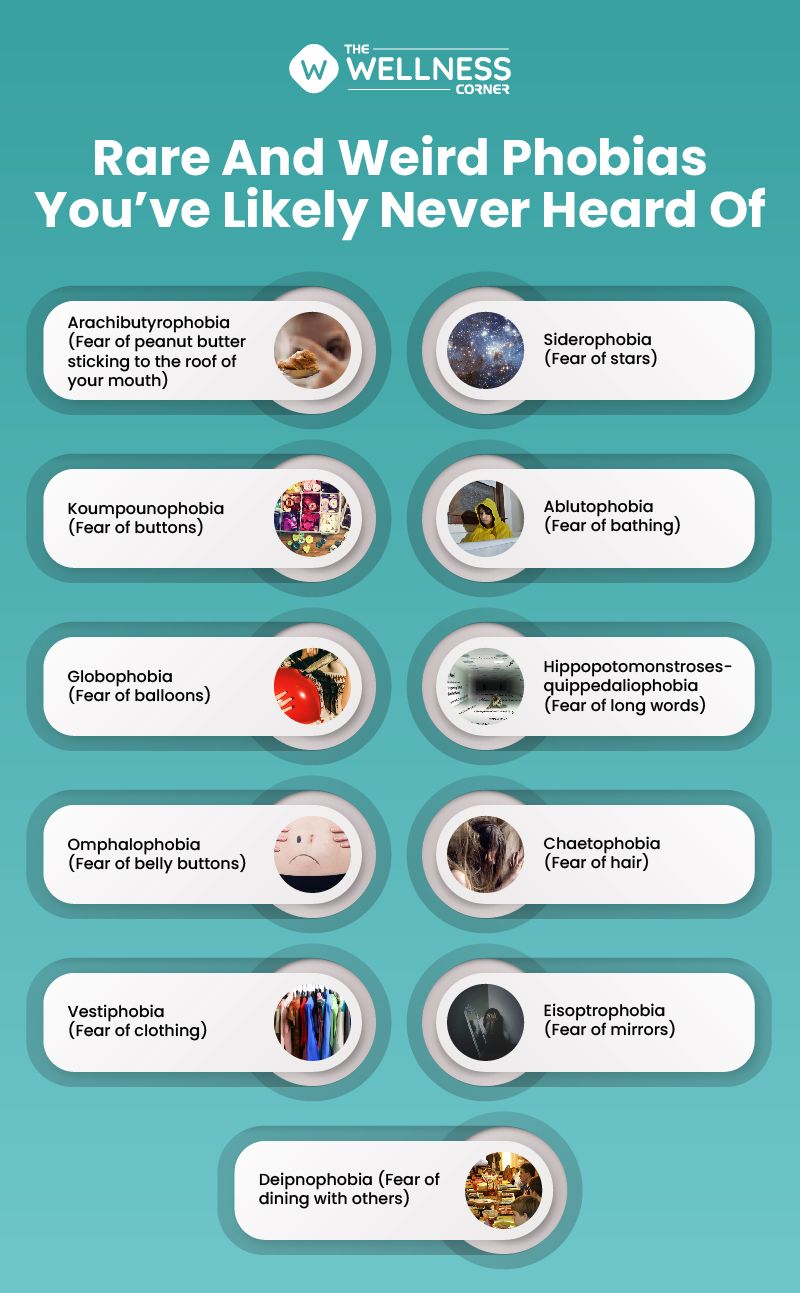Do you have any particular fears?
Everyone has things or situations that they fear. For example, some people get weak knees when they are standing high up and cannot bear to look down; some people feel breathless as soon as they enter an enclosed space such as an elevator; and some people feel dizzy or even nauseous when they see a pattern of small holes arranged closely together. These are all common fear responses.
However, apart from these well-known examples, there are also many strange phobias in the world, such as fear of large objects, fear of dolls, fear of the opposite sex, fear of going to work, fear of not having a mobile phone, fear of making phone calls… It really does echo the saying: “everything can be feared”.
In fact, phobias are an uncontrollable mental illness that manifests itself as an irrational and excessive fear of a particular object or situation. Even if these things are not scary in themselves, the patient will still feel intense anxiety and try to avoid the relevant situations. According to statistics, about 12.5% of people in the United States suffer from some form of phobia, making it one of the most common mental problems.

So, what do you know about phobias? Today, let’s talk about this unique human “instinct”—fear.
01. Am I the only one who is afraid of XXX?
Specific phobias are intense fears of specific objects or situations. These fears can be of animals (e.g. snakes, spiders), natural environments (e.g. thunderstorms, water), medical situations (e.g. injections, surgery) or everyday activities (e.g. driving, flying). While many people feel nervous or uneasy about certain things, to be diagnosed with a specific phobia, the following conditions must be met:
If all of the above conditions are met and cannot be explained by other psychological disorders, it may be a specific phobia.
In general, specific phobias can be divided into four main categories:
Although scientists have studied a large number of common phobias, we still know very little about some rare phobias. Some of these conditions have even only been discovered through case studies. The Douban group “Ah, this damn sweet fear” has more than 100,000 members who have shared their experiences of fear, from walking into old buildings to facing the mountains on the edge of the city, to the sound of a voice assistant talking non-stop. The variety of strange and bizarre fears is breathtaking.
To facilitate the description of these rare phobias, scientists usually give them a special name, usually in the format of “Greek word for the source of the fear + phobia”. For example, “fear of chickens” is called alektrophobia, and “fear of mirrors” is called spectrophobia.
02. Top 10 rare phobias
Next, let’s take a look at those incredible-sounding but real phobias!
1. Alektrophobia
You may not find chickens threatening, but some people are terrified of them. An 18-year-old woman has a long-standing fear of chickens, and even worries about their presence in her surroundings, due to a traumatic childhood experience. This phobia is a type of zoophobia.
2. Gerascophobia
This is a persistent fear of growing old. The sufferer may take extreme measures to prevent growing up, such as dieting to reduce nutrient intake or deliberately hunching their back when walking to hide their height. A 14-year-old boy once refused to eat normally and deliberately imitated the voice and movements of children because of this.
3. Ambulophobia
Walking is a very common activity for us every day, but for some people it is a nightmare. They are afraid of falling, so they choose not to go out or get out of bed. This fear is more common among the elderly, as their declining physical functions make them more likely to fall.
4. Emetophobia
People with this phobia are extremely afraid of vomiting, and it can even develop into a fear of food. According to statistics, about 3.1% to 8.8% of people have a slight fear of vomiting, but only 0.1% reach the level of emetophobia.
5. Arachibutyrophobia
The feeling of peanut butter sticking to the roof of the mouth is unbearable for these people. In addition, people who are allergic to peanuts may experience a psychological trauma if they have experienced a severe allergic reaction, which can lead to post-traumatic stress disorder (PTSD).
6. Spectrophobia
People with this phobia are terrified when they see a mirror or other reflective surfaces. People with depression or schizophrenia are more likely to notice their distorted image in the mirror, which exacerbates the fear.
7. Decidophobia
Making decisions may be a piece of cake for ordinary people, but for people with decidophobia, it is a disaster. They always overestimate the consequences of small decisions and panic over every choice.
8. Hippopotomonstrosesquipedaliophobia
As the name suggests, sufferers of this phobia have an irrational fear of long words. Interestingly, the name itself is an extremely long word, which is a kind of “self-deprecating” naming.
9. Chiclephobia
This phobia is triggered by the thought of chewing gum or seeing someone else chewing gum. It may be caused by a negative experience with chewing gum in the past, such as choking or being unable to speak because the gum is stuck in the mouth.
10. Phobophobia
It may sound like a made-up word, but phobophobia is a real thing. People with this phobia are afraid of being in a state of fear. It is especially common in people who already suffer from other anxiety disorders or phobias.
03. Find the right approach and say goodbye to fear
Whether your phobia is common or rare, modern science can provide effective treatments. Research shows that cognitive behavioural therapy (CBT) and exposure therapy are two particularly effective approaches.
Cognitive behavioral therapy (CBT)
focuses on the way patients think and behave. By analyzing their thinking patterns, it helps them correct their misconceptions and thus reduce their fears. The core theory of CBT is the “cognitive triangle”, which states that cognition, emotion and behavior interact with each other, and changing any one of them will lead to overall improvement.
Exposure therapy
Exposure therapy helps patients gradually adapt to and overcome their fears by actively exposing them to the stimuli that trigger the fear. For example, a patient with agoraphobia is taken to a real square and repeatedly exposed to it until they realize that the expected bad outcome does not happen.
In addition, there are some new technologies that are being used to assist in the treatment, such as combining virtual reality technology with exposure therapy, which not only accelerates the treatment process, but also significantly improves the results.
Be brave and face your fears
In fact, everyone has something they fear, and this is an instinctive reaction of the brain to protect us. In most cases, this fear is only temporary and does not affect our lives.
However, if a certain fear has seriously interfered with your physical and mental health and daily life, then don’t ignore it. Seek professional help in time and receive scientific treatment, and you will find that the symptoms can be effectively alleviated.
Remember, admitting “I’m scared” is not a sign of weakness, but the first step towards recovery. True bravery begins by facing your fears head-on!

